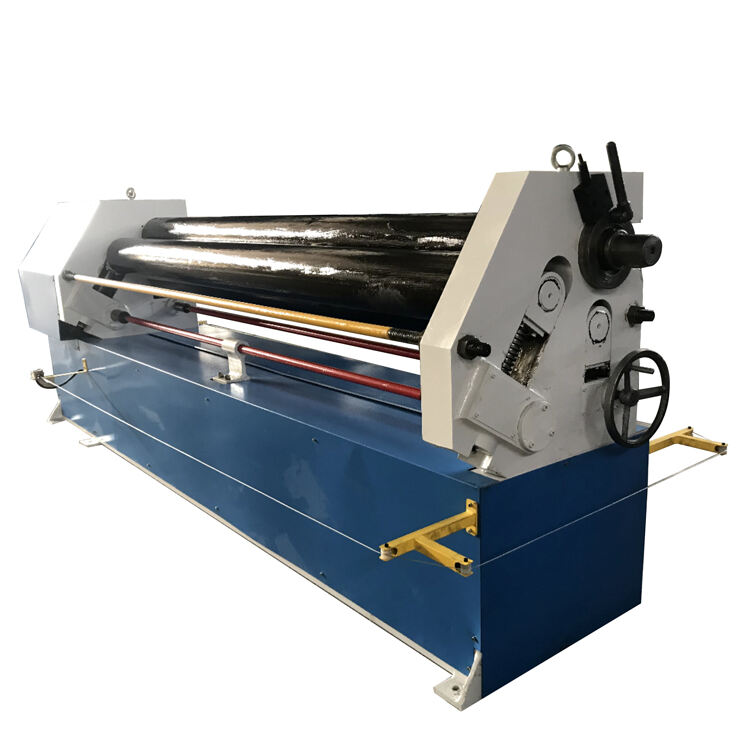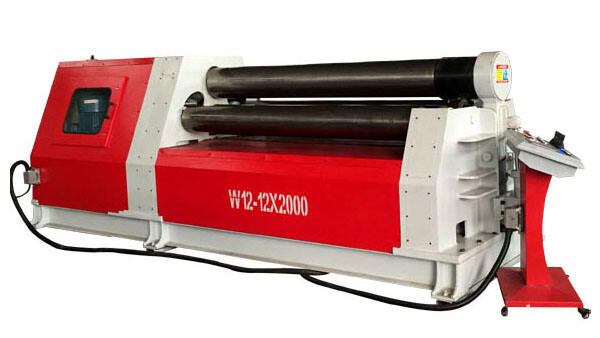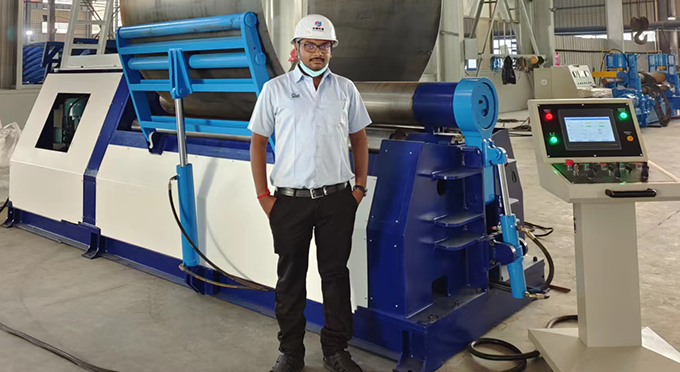The Role of High-Speed Plate Rolling Machines in Modern Metalworking
Driving Efficiency in Heavy-Duty Applications
High-speed plate rolling machines play a crucial role in enhancing productivity in heavy-duty applications such as shipbuilding and construction. These industries require equipment that can increase output rates while minimizing manual labor, which is precisely what these machines offer. Designed to manage thick, heavy materials, they are ideal for demanding environments where efficiency is paramount. According to industry reports, enterprises utilizing high-speed plate rolling technologies have experienced productivity boosts of up to 30%. This statistic underscores the vital function of such machines in optimizing operations and ensuring that industrial tasks are completed more swiftly and effectively.
Integration with CNC Technology for Precision
The integration of CNC technology into plate rolling machines represents a significant leap forward in terms of precision. This advanced technology allows for the production of complex geometries with tighter tolerances, as CNC systems facilitate automated adjustments and programming. By reducing human error and accelerating the production process, CNC-enabled machines prove indispensable in modern metalworking. Expert insights indicate that these machines can achieve precision levels that were once beyond the reach of manual operations. Therefore, the combination of high-speed capabilities and CNC precision positions these machines as essential tools in delivering high-quality, precise metalwork products across various applications.
CNC Plate Bending Machines: Automation & Accuracy
CNC plate bending machines revolutionize metalworking by incorporating sophisticated software that allows engineers to create precise bending plans, thus reducing setup times. These machines excel at producing complex shapes that align with specific engineering requirements without sacrificing speed. For example, they can handle intricate geometries needed in the aerospace and automotive industries effectively. Studies have shown that by adopting CNC bending technology, companies can achieve up to a 20% reduction in material wastage. This significant reduction not only boosts productivity but also enhances cost-efficiency in operations.
Hybrid Systems: Combining Hydraulic and Electric Power
Hybrid plate rolling systems represent a groundbreaking merger of hydraulic and electric power, offering enhanced performance and reduced operational costs. These systems boast faster response times and reduced energy consumption, aligning with the growing emphasis on sustainability in manufacturing. Industry analysts predict that hybrid technologies could soon dominate the market, accounting for a substantial portion of new equipment sales. Their ability to deliver energy-efficient solutions makes them an attractive choice for manufacturers aiming to reduce carbon footprints while maintaining high output levels.
Three-Roll vs. Four-Roll Plate Rolling Designs
Choosing between three-roll and four-roll plate rolling designs depends largely on the specific needs of an operation. Three-roll designs are prized for their simplicity and efficiency in minimizing material waste, making them ideal for smaller-scale operations. On the other hand, four-roll machines offer superior precision and control, especially for complex bending tasks found in larger-scale productions. Data indicates that four-roll machines provide better accuracy for advanced metalworking applications compared to three-roll options, making them indispensable in settings where precision is paramount, such as in the aerospace or heavy machinery sectors.
Handling Thick Materials in Construction and Shipbuilding
Heavy-duty plate bending rolls are essential for handling thick materials in construction and shipbuilding, where structural integrity is paramount. These machines are specifically designed to bend high-strength steel and alloys that are critical in marine and industrial applications. Leveraging case studies in industry settings, it is evident that heavy-duty plate bending rolls streamline the fabrication process by boosting throughput while maintaining precision. The capability to work with robust materials not only enhances the reliability of structures but also ensures that projects meet stringent engineering and safety standards.
Reducing Downtime Through Robust Machine Design
Modern heavy-duty plate bending rolls are equipped with robust components engineered to minimize wear and tear, significantly reducing overall downtime. Regular maintenance, combined with these durable designs, helps extend the machinery's lifespan, ensuring reliability in demanding operational environments. The implementation of advanced machine designs leads to improved operational uptime, reportedly increasing it by up to 15%. This reliability directly translates into enhanced productivity, enabling businesses to maintain uninterrupted workflows and achieve greater efficiency in their manufacturing processes.
Sustainability Benefits of Electric-Driven Systems
Electric plate rolling machines significantly contribute to energy efficiency and sustainability. By replacing traditional hydraulic units with electric-driven systems, manufacturers can achieve up to 40% reduction in energy consumption, translating into considerable operational savings. The transition to electric systems not only helps in reducing overall costs but also aligns with global efforts to minimize carbon footprints, thereby promoting environmental sustainability. A report from environmental studies highlights that the shift to electric systems is a crucial step toward financial savings while ensuring eco-friendly manufacturing practices.
Comparing Hydraulic Press Brake Machines to Electric Alternatives
In the debate between hydraulic press brake machines and their electric counterparts, the latter stands out with distinct advantages. Electric models generally offer faster cycle times and less maintenance, largely due to advanced servo systems that enhance machine responsiveness and boost production rates. This efficiency in operations is a significant reason why over 60% of manufacturers are now eyeing electric options for future investments. These electric alternatives also bring about a smoother and quieter operation, making them more appealing for modern manufacturing environments aiming for streamlined and efficient production processes.
Table of Contents
-
The Role of High-Speed Plate Rolling Machines in Modern Metalworking
- Driving Efficiency in Heavy-Duty Applications
- Integration with CNC Technology for Precision
- CNC Plate Bending Machines: Automation & Accuracy
- Hybrid Systems: Combining Hydraulic and Electric Power
- Three-Roll vs. Four-Roll Plate Rolling Designs
- Handling Thick Materials in Construction and Shipbuilding
- Reducing Downtime Through Robust Machine Design
- Sustainability Benefits of Electric-Driven Systems
- Comparing Hydraulic Press Brake Machines to Electric Alternatives




